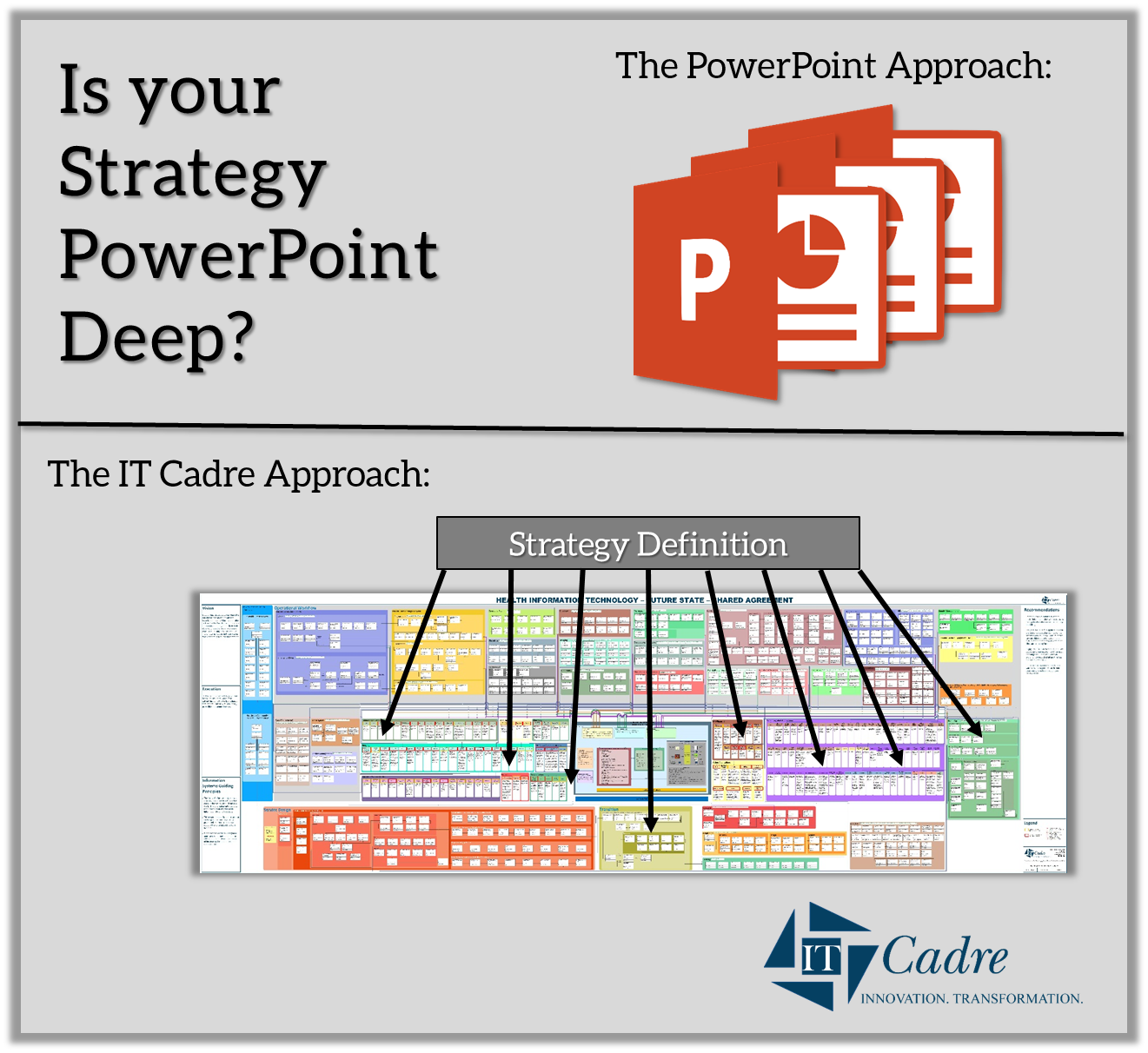
Is your Strategy PowerPoint Deep?
January 8, 2019 by Rob Hyde, Senior Director of Strategic Planning and Implementation

Strategy is one of the most overused and least understood words in business—yet it’s absolutely essential for organizations that want to adapt and grow.
Is your strategy PowerPoint deep and as slick as the glossy booklet a team took months to settle on? Is your strategic plan based primarily on a series of macro-enabled, pivot-tabled spreadsheets estimating costs 2-5 years out? If you Google "reasons strategic plans fail", you’ll get 512 examples to choose from. Change “fail” to “succeed” and Google still returns why they fail. There are so many books, articles and blogs written on the failure of strategy and strategic planning because so many of us have been the victim of, or a participant in, a well-intended but too often fruitless effort to build a strategy or a strategic plan. Even leaders are doubters: one survey showed only 2% of leaders believe they’ll achieve even 80% of their strategy. Robert Kaplan and David Norton, authors of The Balanced Scorecard, assert 90% of organizations fail to execute their strategies. With mounting frustration over the failure of strategic planning efforts to reliably lead to improved outcomes, is it any wonder the very necessary "strategy baby" gets thrown out with the frustrating "strategic planning bathwater"?
In IT Cadre’s work with government and commercial enterprise leaders, we find one of the most pervasive reasons for ineffective strategies and strategic plans is a false sense of agreement. Executives and managers use high-level words and heads nod knowingly. Ten people hear and even discuss bullets on a slide then leave the room believing all ten agree. But when we talk to them privately, a few gentle but precise questions reveal a significantly different understanding of what those “everyone knows what they mean” phrases really mean. In one example, a client’s senior leaders all said they wanted to become an “Integrated Health System.” When we went a layer deeper, we learned this seemingly simple three-word phrase meant a thousand different things. Another client had an oft-repeated vision of “implementing category management transformation” across a global enterprise. Their efforts became much more effective after they realized their own leadership team lacked a shared understanding of what these words actually meant.
These two brief examples show some of the challenges of defining a strategy. IT Cadre knows strategy is the underpinning of any organization’s success. For us, the word “strategy” is shorthand for a set of decisions about which things an organization will do and which things it will not do. A strategy has to be simple enough for everyone to remember it and act on it in a consistent manner.
IT Cadre has two techniques for producing a strategy within an organization. In one technique, the IT Cadre team will take the organization’s leadership through a guided decision support methodology where the focus will initially be on desired outcomes and establishing consensus. Given that it is easier to correct than create, the IT Cadre team will initially seed some of the desired outcomes and have the leadership evaluate whether they are valuable or not. The team will then work with the organization’s senior leadership to set those desired outcomes into goals and create an overarching strategy statement that people will be able to remember and translate into execution.
If the organization is not able to support this type of engagement, the IT Cadre team can take the current projects, programs, culture and values that the organization already has, extrapolate out the desired outcomes from those items and then shape those desired outcomes into the goals and the overarching strategy statement. Again, the focus is on building consensus and buy-in throughout the organization.
This approach to strategy definition ensures that the organization does not get caught in the trap of incremental improvement as a substitute for strategy and ensures there is a single strategy that everyone understands and that everyone can use in their day to day decision making.